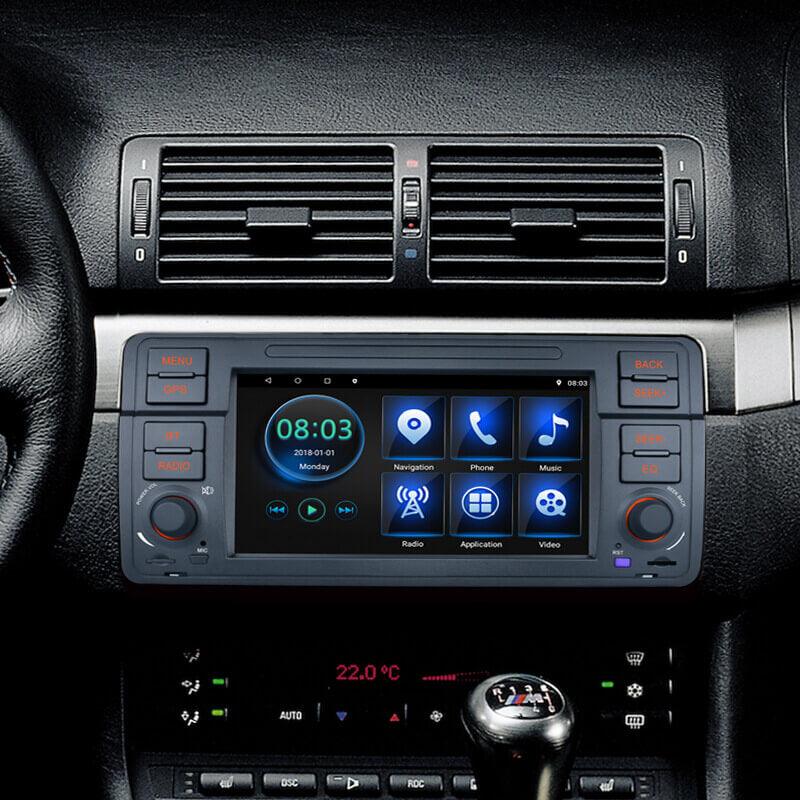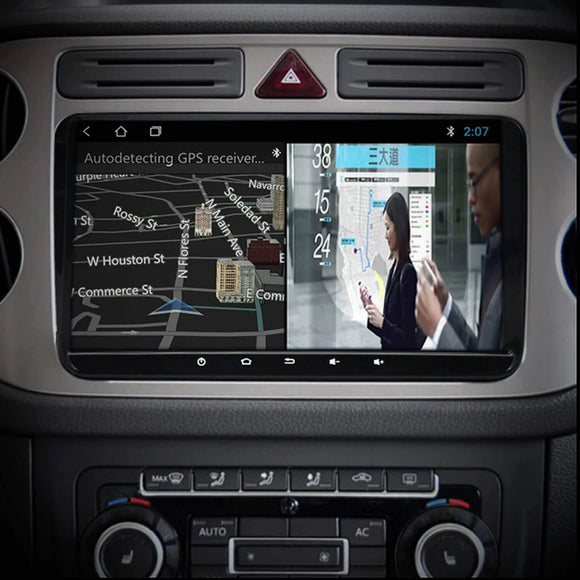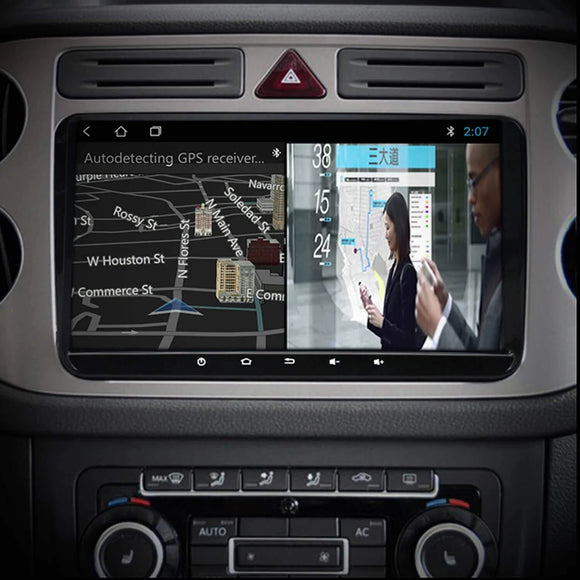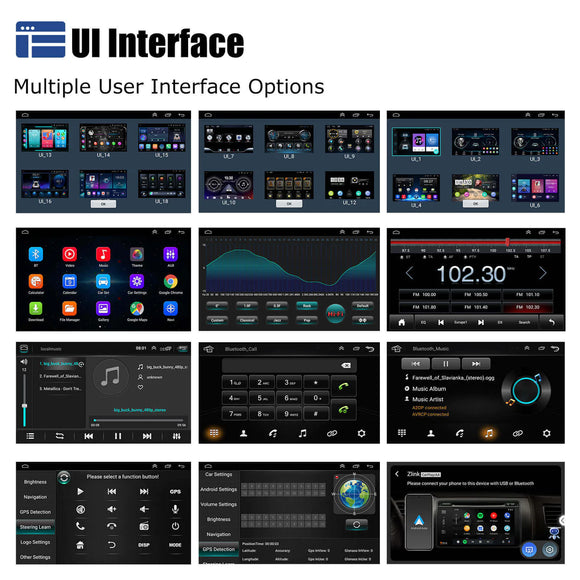
Automotive Touch-Screen Sensing: It's All About Your ADC
In this design solution, we learn how a 24-bit sigma-delta ADC touchscreen interface is a fail-safe method for successfully sensing human touch (gloved or not) through applied pressure.It's All About Your ADC in Automotive Touch-Screen Sensing Abstract
In this design solution, we will see how a 24-bit sigma-delta ADC touchscreen interface can detect human touch (gloved or not) by applied pressure.
Introduction
Traditionally, vehicle infotainment (information and entertainment) clusters had a few knobs for climate control and a radio control to listen to your favorite music (Figure 1). Modern infotainment clusters use touch screens as the primary human-machine interface (HMI), significantly increasing the vehicle's adaptability to the driver's preferences. Drivers now have access to extensive diagnostic information such as driving behavior analysis, navigation, audio experience that includes Bluetooth®, USB, and satellite connections, as well as climate and other sophisticated vehicle settings.
Figure 1: Automotive controls from the twentieth century.
Touch screens are the underlying technology that allows for more configurability by removing mechanical size limits from classic infotainment systems. Touch screens generate a dynamic interface with specific menus for each of the functionalities listed above. There are two dominant technologies: piezo-based and capacitive-based displays.This design solution goes into these two technologies to describe their core operating principles, highlight the merits and limitations of each, and conclude which architecture is best for automotive applications.
Using Capacitive Arrays in an Infotainment Cluster
Capacitive-sensing technologies have grown in popularity as they have been integrated into tablets and smartphones. A capacitive touch-screen controller (CTSC) receives input signals by the conductive contact of a human finger on a specified interface. A capacitive element is made up of two plates that are near together and separated by a dielectric (Figure 2).
The capacitor sensor responds to heavy or lightly applied pressures that allow accurate sensing across a wide dynamic range. A CTSC can sense subtle changes by placing an additional capacitor across the touch-screen capacitor. In doing so, the total capacitance is a sum of the touch-screen capacitor (CTOUCH) and the controller’s capacitance (CCTSC) per Equation 3 . Additionally, the total charge is a sum of the touch-screen charge (QTOUCH), and the controller’s charge (QCTSC) per Equation 4.
The CTSC evaluates these changes across the capacitor array, to map the overall force magnitude and coordinates (Figure 3).A capacitive-array touch screen uses a 12-bit capacitive touch-screen controller to collect data.Figure 3. A capacitive-array touch screen uses a 12-bit capacitive touch-screen controller to collect data.The capacitive element in the touch screen is an array which contains numerous capacitors that require sensing. Typical CTSCs incorporate 12-bit analog-to-digital converters (ADCs). This conversion technique effectively captures the activity on the capacitive array.Automotive capacitor touch systems do have a few limitations. If the driver of the automobile is using gloves, the capacitive touch screen may not accommodate the glove material since the dielectric material in most gloves make it difficult for the touch sensor to detect a touch.
Touch accuracy is a critical feature in touch sensor design. The closely packed capacitors make accuracy difficult in a touch-screen keyboard application. Adding more controller sensor channels to accommodate a larger touch-sensor grid density is one technique to achieve high accuracy. However, the cost of this sort of technology is more CTSC and capacitor array pins. Furthermore, this will necessitate additional sensor channels, more traces running along the touch screen's border, and an increase in bezel-width capacitive array.
Electromagnetic interference (EMI) sources abound in the vehicle environment. Any little interference, such as an EMI signal, will be visible in the sensor's output or on the PCB traces connecting the sensor to the CTSC. The stronger the EMI interference owing to increased coupling possibilities, the longer the cable or traces to the sensor. Shorter PCB traces can help to enhance this.Many CTSCs offer adjustable sensitivity, which helps with this tricky challenge. However, increasing the sensitivity of the touch controller may result in inadvertent triggers even when the driver is gloveless.
Piezo Sensor-Based Infotainment Cluster
Piezo materials are those that change their electrical properties as a result of mechanical deformation, often known as strain. The most prevalent resistive touch-screen topologies employ piezoresistive materials, which alter resistance in response to mechanical force. Load sensors are what these gadgets are called. The Wheatstone resistive bridge model (Figure 4) is adequate for this sensor.A load cell sensor with a resistive Wheatstone model.
Figure 4: A load cell sensor's resistive Wheatstone model.
In Figure 4, the Phidgets CZL616C micro load cell measures force in one direction. The nominal values of R1, R2, R3, and R4 are 1kΩ and the rated output is 800µV/V. The odd number resistors (R1 and R3) increase their resistance with applied force, while the even number resistors (R2 and R4) decrease their resistance. These changing resistor values, in conjunction with the source voltage (VS), create a change in the input voltage to the ADC.
As for the EMI sources, the sigma-delta ADC differential input’s large common-mode rejection ratio (CMRR) easily rejects these signals.For this system, a gesture is as simple as a single finger swipe enabled by a system host microcontroller that can readily recognize simple gestures like pinch, pull, zoom, rotate, double, or triple tap.
The increasing demands of the automobile driver for easy control of the infotainment system continues to guide the look and feel of the next-generation of infotainment clusters. Although the knobs and levers are not completely gone, the emerging alternative is a touchscreen interface that provides greater control and flexibility.At the front end of the automobile touch screen is either a resistive load cell or capacitive array. The complete picture of capacitive array sensing requires a 12-bit CTSC. This interface senses the human touch through applied pressure, however, gloved fingers and tightly packed sensors present errors in the measurement system. The best solution for greater accuracy is through resistive load cell sensing that requires the use of a 24-bit ΔΣ ADC. This provides the touch screen interface a fail-safe method for successfully sensing human touch, gloved or not, through applied pressure.


